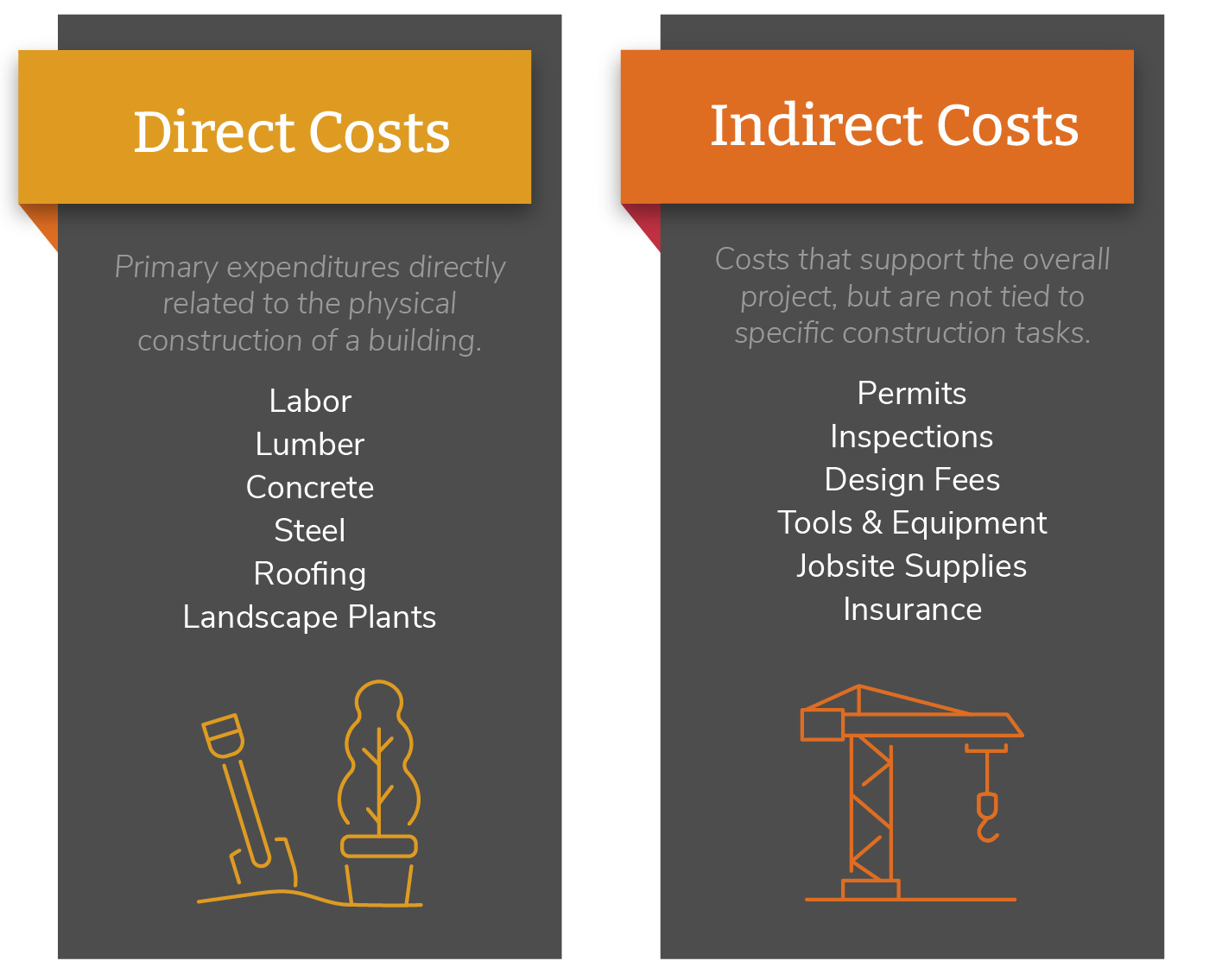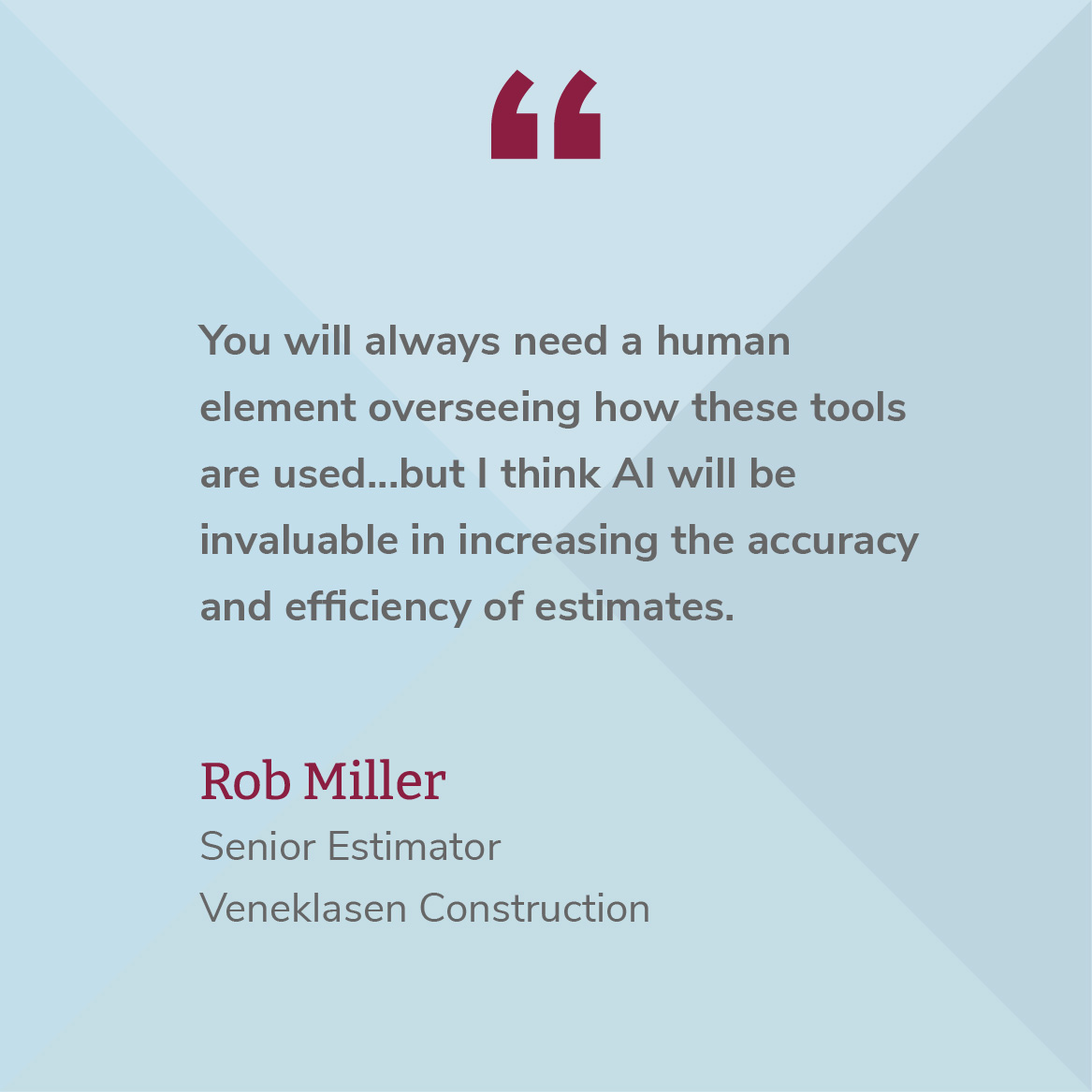Even the most ambitious and stunning construction project can run into serious issues without a solid foundation – and that foundation starts with an accurate estimating process.
 In construction, the estimating process forecasts the costs involved in a project. It accounts for direct costs like raw materials and labor and indirect costs like permits, inspections, and administration expenses. When being considered for a project, a general contractor (GC) will create an estimate, which represents the budget they believe is needed to complete the project.
In construction, the estimating process forecasts the costs involved in a project. It accounts for direct costs like raw materials and labor and indirect costs like permits, inspections, and administration expenses. When being considered for a project, a general contractor (GC) will create an estimate, which represents the budget they believe is needed to complete the project.
The estimating process is particularly important as it helps determine the contract price that the client and GC ultimately agree upon. Having an accurate estimate is crucial to keeping costs down, minimizing change orders, completing projects on time and on budget.
At Veneklasen Construction, our estimating department is led by Rob Miller, a 19-year employee and subject matter expert. Rob explains the importance of the estimating phase of a project: “Estimating as accurately as possible is important to both the general contractor and the client. The GC wants to be competitive while still being able to make a profit, while the client needs an accurate estimate to determine the feasibility of the project, their return on investment, and to secure financing from the bank or investors.”
How Its Done – Project Cost Estimation
The method and depth of a project estimate depends on where the project stands in its design phase.- For projects that are still just a concept or in the preliminary design stages, a general estimate can be put together based on the size and type of project. This estimate often uses historical data from past projects, industry trends, trade partner insights, and standard unit costs. These general estimates can be useful in determining if a project can move forward as is, or if design changes need to be incorporated to keep the project within the desired budget.
- Projects that are further along in the design process and are more certain to be moving forward, are at a stage where an in-depth estimate is needed. In addition to our in-house cost analysis, we solicit feedback from subcontractors and suppliers to validate current market costs and value add opportunities.
For each trade and element of a project an estimator will generally request at least 2 to 3 bids from subcontractors and suppliers so that they can ensure cost efficiencies are recognized and a competitive final price. This is where choosing a GC who maintains good working relationships with trade partners and subcontractors makes a significant difference. GCs who have these relationships are better able to analyze the pricing they receive and balance cost with quality of work.
Technology improves speed and accuracy
 Like many industries, the field of construction is seeing the integration and innovation of artificial intelligence (AI) tools. These tools can analyze data and trends quickly, giving an estimator not only a larger pool of resources to draw from but speeding up the process of getting measurements and material costs. AI’s predictive capabilities can also consider factors such as material price changes, labor costs and availability, and more.
Like many industries, the field of construction is seeing the integration and innovation of artificial intelligence (AI) tools. These tools can analyze data and trends quickly, giving an estimator not only a larger pool of resources to draw from but speeding up the process of getting measurements and material costs. AI’s predictive capabilities can also consider factors such as material price changes, labor costs and availability, and more.
Rob Miller relays what he believes tools like AI mean for the future of estimating. “Data analytics tools including AI will inevitably become more widespread in the construction industry. As the historical data these tools access gets more accurate and comprehensive, so will the results they provide. You will always need a human element overseeing how these tools are used and determining when it is appropriate to apply their answers to a specific project, but I think they will be invaluable in increasing the accuracy and efficiency of estimates.”
Value Engineering – A Win-Win for Budget & Design
In construction, value engineering (VE) is the practice of reviewing a building plan to reduce costs while maintaining or increasing functionality and aesthetics. Value engineering can take place at many stages of the construction process, including during estimating.- An estimator can value engineer when reviewing a project using their own past experiences to identify areas of potential cost savings.
- When soliciting estimates or bids from trade partners, those partners may be able to offer a unique perspective on design features that can reduce the overall cost of a project. They also may have access to new materials or methods that were not originally considered. Veneklasen Construction collaborates with our great trade partners and leverages our long-term relationships to maximize the VE that can take place during the estimating phase.
 Chris Veneklasen, CEO of Veneklasen Construction says, “Value engineering identifies opportunities to optimize to save costs and ensure the final product meets your needs. The earlier your general contractor can become involved with the project, the more you can potentially save through value engineering."
Chris Veneklasen, CEO of Veneklasen Construction says, “Value engineering identifies opportunities to optimize to save costs and ensure the final product meets your needs. The earlier your general contractor can become involved with the project, the more you can potentially save through value engineering."
Value Engineering Examples
Bottom line – a successful project begins with an accurate estimate
Project estimating is fundamental to success in construction. By giving a client an accurate estimate, the GC proves they have a clear understanding of the project's scope and the costs involved. A realistic estimate gives the client an idea of how their money is being spent and reveals areas where costs may be higher than anticipated. This can be an opportunity for value engineering or for reevaluating the project and its goals. By choosing a contractor who prioritizes accurate estimating, the client can set themselves up for a successful project delivered on time and within their budget.“It’s important to us as an organization to meet the client where they are when estimating a project,” says Chris Veneklasen. “By bringing a team together that understands the nature of the project and the client’s goals, we strive to do our best to bring their dream from an idea into reality.”

